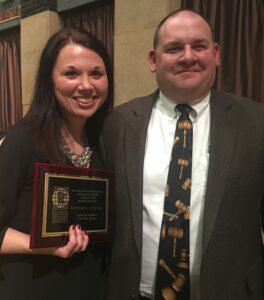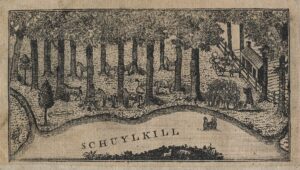Team-Teaching Social Studies and Language Arts in a Rigorous Project-Based Curriculum
Teachers who aim to impart critical thinking skills must be willing to trust their students. Trust is essential to a range of teaching strategies, but one very interesting example appears in the work of Cathy Alderman and Steve Main, who partner in a combined Social Studies and Language Arts program at Anderson New Tech High School in Anderson, California. They allow trust—and accountability—to regulate the pace and direction of the curriculum.
Alderman, a graduate of Ashland University’s Master of Arts in American History and Government (MAHG) program, teaches Political Studies, a required course for seniors that combines English, American Government, and Economics in an integrated curriculum at Anderson New Tech. Students at New Tech are given responsibility for the management of their own education from the first day of their freshman year, due to the school’s use of a rigorous version of “project-based learning” modeled after the team-based work environment of corporate America. With English instructor Steve Main, Alderman team-teaches both the freshman and the senior classes at Anderson New Tech, introducing new students to the project-based model and later pushing them, as seniors, to complete a months-long research project in which students work in teams to investigate local civic challenges.
Anderson and Main jointly plan and lead class sessions and work together to coach students through projects, assessing their work at regular intervals. Partnering with an English instructor has given Alderman the confidence to put the exposition of primary documents into the hands of students themselves. Main uses a combination of Socratic questioning and “scaffolding”—quickly filling conceptual gaps by, for example, explaining archaic vocabulary—to help freshman students closely read the primary documents covered at the beginning of the course: excerpts of 17th and 18th century English and American political theory, usually characterized by long periodic sentences. A few weeks into the fall semester, however, students are working through primary documents on their own. Class sessions become student-led discussions, sometimes conducted in a “fishbowl” style: a circle of eight students debate questions posed by both teachers. For example, after reading “Common Sense,” students are first asked to consider, “How does Paine ask you to prepare yourself for his ‘common sense’ arguments?”
Participants in the discussion must cite passages of the primary document to support their views. Meanwhile, the rest of the class takes notes on the debate, so that later they too can comment, challenging or supporting the interpretations they have heard. Alderman and Main trust the students to keep the discussion on track. “Students become very good at calling each other out for making claims that are not supported by the text,” Alderman says. “They’ll demand, ‘Where did you find that in the document?’”
These discussions early in the freshman year give students the confidence to undertake a later project when they divide into teams and research the earliest constitutions adopted by the newly independent states during the Revolution. Each team of three or four students assumes the identity of one of the thirteen states. They review early constitutions and other primary sources which shed light on the distinctive political perspective of their state. As each team digests and discusses the documents they have found, they come to understand their shared political principles and interests. Then all the teams meet in a mock convention, attempting to hammer out a single federal constitution. “When teams have so thoroughly and enthusiastically adopted the point of view of their states that they are unable to resolve their differences, it opens a discussion on the remarkable achievement of the Founders in 1787,” Alderman says. Students grasp an essential tenet of historical thinking, a tenet often obscured by the march of dates and facts that textbooks present: that political outcomes are not inevitable. Human beings, acting cooperatively or confrontationally in history, determine their own future. Moreover, students observe that in a free society, the ability of citizens to shape their own future is in the largest measure limited only by their ability to compromise.
In the second half of the freshman year, students to undertake a research project combining literature and geography, reading John Steinbeck’s Travels with Charley while working in teams to research one of the towns Steinbeck describes in his memoir. Eventually they work up video presentations, pitching the town’s amenities and quality of life to the rest of the class, as if they were speaking for the local Chamber of Commerce.
“When you teach as we do,” Alderman says, “you are trusting students to reach their own conclusions. When you show this level of confidence in your students, and they see you are there to cheer them on rather than to dictate what they should think, they astonish you with their willingness to think, investigate, and even originate policy ideas.”



